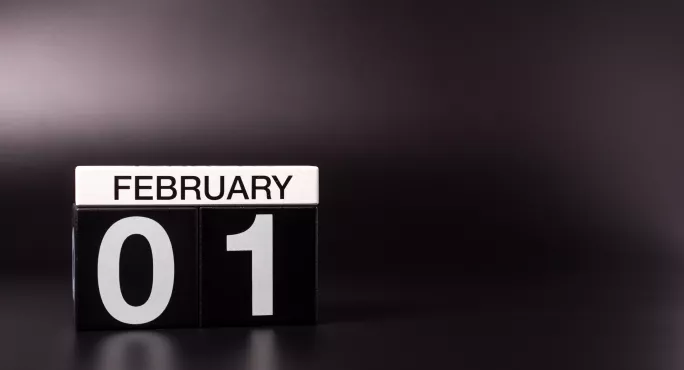Swinney: ‘Tall order’ for 1 February return of pupils

It will be a “tall order” for pupils to return to school at the beginning of next month, education secretary John Swinney has said.
John Swinney made his comments on BBC Radio’s Good Morning Scotland, ahead of the fortnightly review on Tuesday of the proposed date for reopening schools, currently set for Monday 1 February.
So, what is the cabinet likely to be mulling over when it meets on Tuesday to discuss the closures?
Here is what we know so far, including some of the latest figures on the rate of Covid-19 among children and young people:
- There were two reasons for closing schools, said first minister Nicola Sturgeon on 4 January, when announcing the move to online learning in the Scottish Parliament. These were “the high level of community transmission and the uncertainty among the scientific community about the impact of the new variant on transmission among young people”, she said
- On that first point, community transmission remains high and, although sympathetic noises have been made about prioritrising the vaccination for teachers, there is no concrete plan to actually do this.
Coronavirus lockdown: Senior pupils could be prioritised for return to school
Equity audit: Pupils in P1 and S1 among worst hit by Covid lockdown
Remote learning: 8 key points on inspections and funds
- In terms of the coronavirus figures, when Ms Sturgeon announced the move to online learning on 4 January, the number of daily new positive cases was 1,905. On Thursday 14 January there were 1,707 daily new positive cases; the R number remained above 1, perhaps as high as 1.4; and 1,829 people were in hospital - “significantly above” the peak of around 1,500 patients in April during the first wave of Covid-19. All this prompted Ms Sturgeon to conclude yesterday in her daily coronavirus briefing that there were “early signs of optimism” and that the figures were “beginning to stabilise” - but they were “nonetheless far too high”.
- Ms Sturgeon also agreed on 4 January with the Greens’ Patrick Harvie that there could be no return to school until there were answers on the question of transmission among young people. The following day, at the daily coronavirus briefing, Scotland’s national clinical director, Professor Jason Leitch, said much remained unknown about the transmission of the new Covid variant among young people and it would take time to look through the data. Could the scientific evidence be there by now to support a return to school? It seems unlikely.
- New figures published by the Scottish government also show that the rate of cases of coronavirus per 100,000 more than doubled for some age groups. For instance the case rate per 100,000 for two- to four-year-olds was 73.1 in the week ending 3 January (according to the latest figures published yesterday), against 33.3 in the week ending 29 November (the previous set of figures).
- The latest Covid-19 statistics for children and young people also show that in the week ending Sunday 3 January, the rate of Covid cases per 100,000 hit its highest level yet for 16- to 17-year-olds, 12- to 13-year-olds, 5- to 11-year-olds and 2- to 4-year-olds, but not for 14- to 15-year-olds. The Covid-19 rate, however, remained below that for the general population for all age groups, except 16- and 17-year-olds. In the week ending 3 January, the case rate per 100,000 for 16- and 17-year-olds was 302.5 cases, and 268.5 per 100,000 in the general population.
- So, might the government decide the solution is to stagger the return, resulting in fewer pupils in school? A phased approach to the reopening of schools has been mooted - Ms Sturgeon has suggested that this could be done based on age and stage, or on the area in which pupils live.
- At the time of writing, level 3 restrictions applied in the Western Isles, Orkney, Shetland and some islands in Argyll and Bute and the Highlands, but not Skye. However, the recent outbreak on Barra might make the government more cautious about opening up society any further, even in these more remote and rural areas, which tend to have much lower rates of the virus.
- Scottish Qualifications Authority chief executive Fiona Robertson has also suggested that senior pupils could be prioritised for returning to school, given the need for teachers to collect assessment evidence to back up their judgements about what grade to award.
- However, the noises coming out of the governments both north and south of the border would suggests they are laying the groundwork for online learning to continue beyond current targets. Mr Swinney, as mentioned, described reopening on 1 February as a “tall order”, while prime minister Boris Johnson said yesterday that it was “far too early to predict any kind of relaxation of the current rules”.
- Meanwhile, the position of Scotland’s largest teaching union, the EIS, is that “given that the R figure remains above 1, it is difficult to see any change being proposed by the Scottish government”.
- Speaking on 4 January, Ms Sturgeon said: “There can be no greater responsibility than that of making sure that the schools to which we send our children are safe. Therefore, in order to get schools open again - as I desperately want to do and will strive to do as quickly as possible - I need to be satisfied that I can say to teachers and parents that it is safe to do so.”
You need a Tes subscription to read this article
Subscribe now to read this article and get other subscriber-only content:
- Unlimited access to all Tes magazine content
- Exclusive subscriber-only stories
- Award-winning email newsletters
Already a subscriber? Log in
You need a subscription to read this article
Subscribe now to read this article and get other subscriber-only content, including:
- Unlimited access to all Tes magazine content
- Exclusive subscriber-only stories
- Award-winning email newsletters